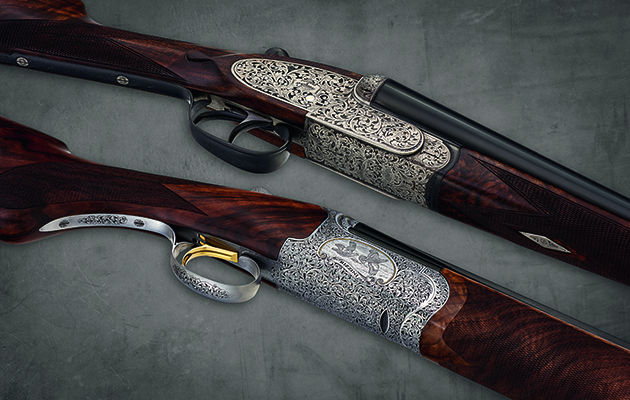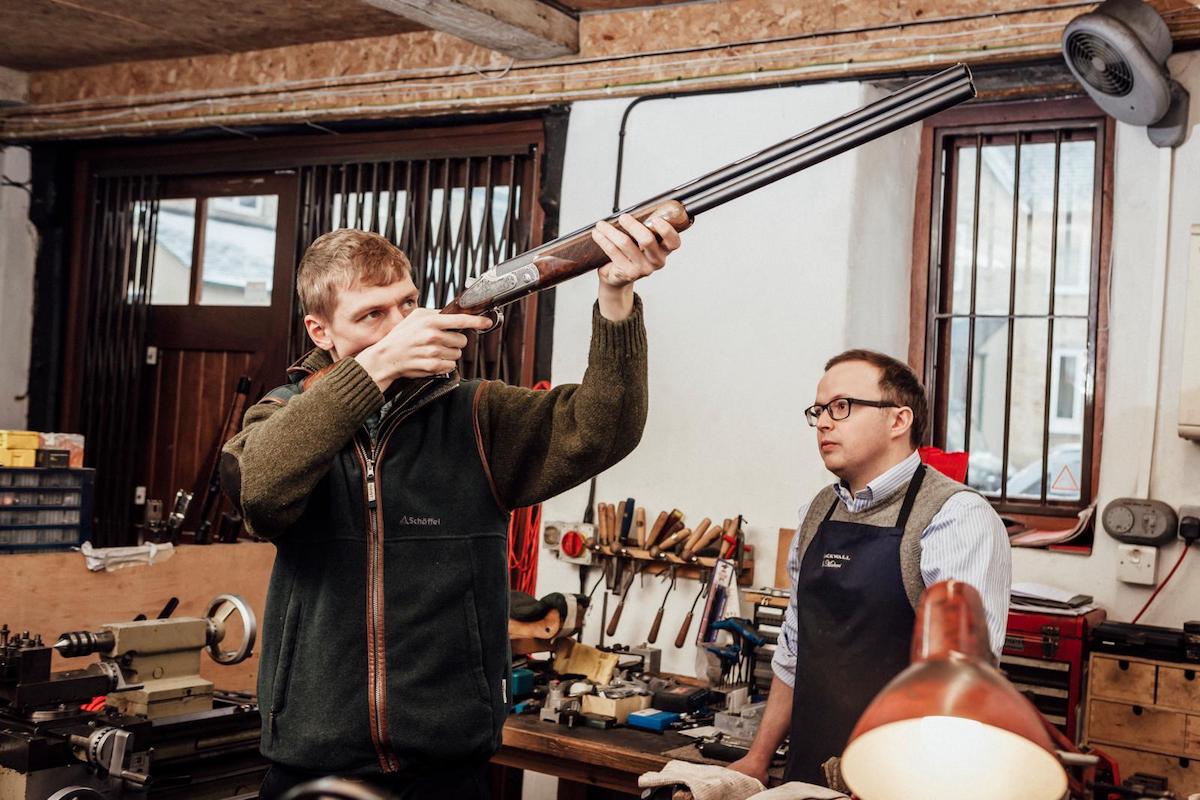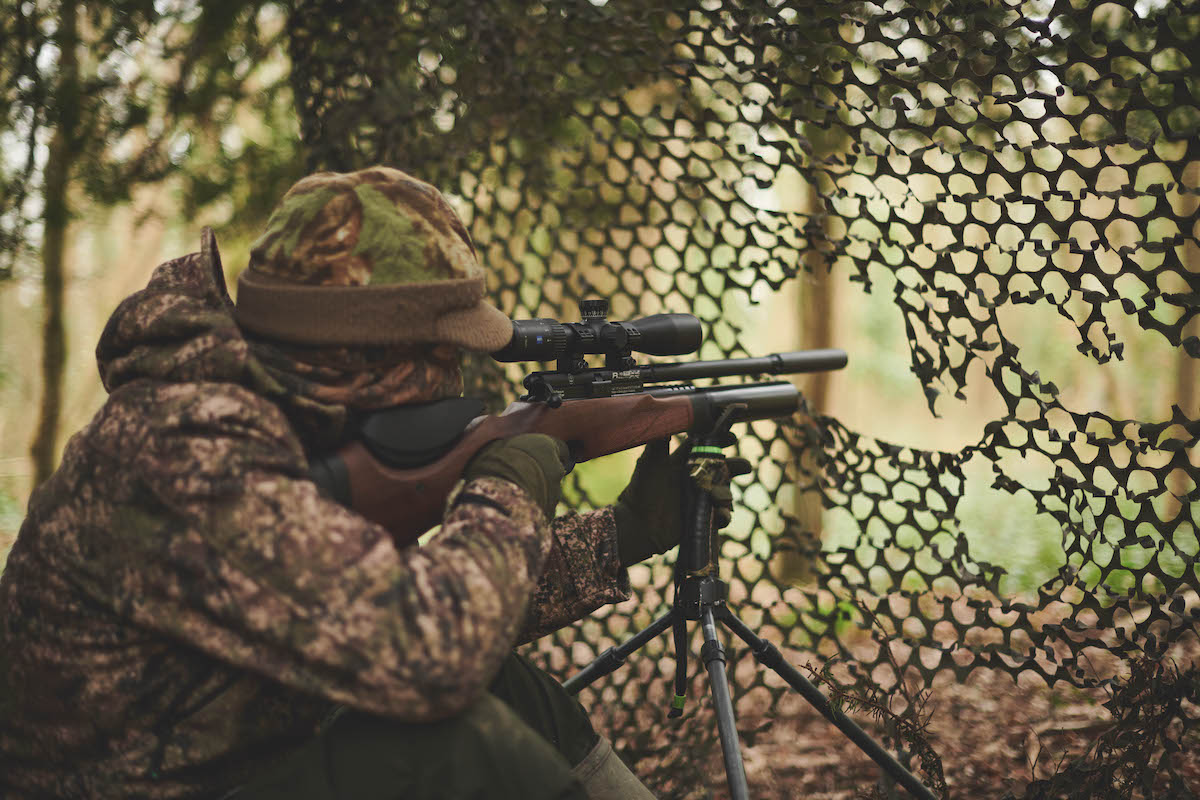The rise and rise of the 16 bore
Giles Catchpole charts the rise in popularity of 16 bore shotguns.

An AYA and a Rizzini 16 bore - both of these stunning guns are indicators of a surge in popularity for the sweet 16
A recent advertisement by ASI – the importer of AYA guns from Spain and, more recently, Rizzinis from Italy – bravely announced that “16 bore is the new black!”. This seemed a bit cryptic on first reading but on further investigation disclosed that there was a bit of a fashion reference going on.
Black, it would seem, is the height of fashion. From haute couture to high street, black is where it’s at. Black is in. Black is back. Black, girls and boys, is just it. Writ large. From time to time some brave pioneer announces that beige is the new black or, indeed, that white is the new black but these flights of fancy never last for very long. When you really dig down through all the flummery, believe you me, what you find is black. And that’s that.
And now 16 bore is the new black. Top of the heap. First choice of the effortlessly chic. Go-to calibre of top guns across the board. Frankly, if you aren’t using one you might as well wear crushed plum velvet loons and cheesecloth. I mean, really.
Now it would be easy to say, at this point, that I have been shooting with 16 bores for the last couple of decades and I have always known that 16 bores were black and now the rest of the world is catching up with me.
Dogmatic days are done
I suspect the truth is that while the 16 gauge was for many years dismissed as a gun for ladies and boys because real men used 12 bores, shooters are now becoming more adventurous in what they are prepared to try and less dogmatic in what they are likely to ignore.
One possible reason lies in the universal popularity of the 20 bore. They are terrific. Brilliant. Go to any shooting school and ask to be taught how to shoot and odds are they will start you with a 20 bore. And many people never shoot anything else. Not least because the 20 bore can be adapted to every quarry in the book. Open chokes and 24g loads for beginners on incoming clays. Improved cylinder and half with 26g shells for partridges, perhaps 28g for grouse? Quarter and three-quarter chokes 30g 6s for pheasants before Christmas and 32g 5s in January. And full/full 34g No.4 headbangers for daft Devon. What’s not to like?
One thing is that you have to shoot differently with a 20. You swing a 12 bore and once launched on its arc it will carry on regardless, zooming through bum, belly and beak with aplomb. With a 20 you have to keep pushing it to where you want it to be. Yes, it is lovely and light to lug about but you have to apply more energy on the peg than off it. So more than a few 12 bore shooters find the 20 bore too much of a change. For them then the 16 bore offers the best of both worlds. Light in the hand but with just a little more heft in the shoulder.
Then there are those who just like to be a little bit different. For them the 16 is a statement: “I follow neither the 12 bore convention but neither do I heed the siren call of the 20 bore trend. I go my own way in life, as unfettered by tradition as I am unswayed by the vagaries of fashion.” Which is fine and dandy and also explains why some other people are equally dismissive of the 16 bore as a bit of a poseurs’ gun.
16 bore is a choice rarely regretted
But if you ask people who routinely use 16s why they do so, the commonest reason would seem to be that they stumbled across them by chance and now wouldn’t change them for the world.
I bought my first 16 bore because I had a 12 bore sidelock by the same maker and thought it would be fun to try and collect a suite – 12/16/20/28/.410. This was in the days when guns lived in cabinets in the study rather than great metal boxes under the stairs. I thought they would look nice. Having bought it, I took it walking-up grouse. And partridge shooting. And covert shooting. And I kept on using it. I don’t use it for wildfowling and I won’t put bonkers loads through it because it’s too old, but that apart I use it for everything. And when another one almost identical turned up, I bought that as well. I didn’t bother with the rest of the set.
Henry Dixon took delivery of a sweet pair of round-action 16 bore Rizzinis from ASI last season. He was a long-time 12 bore man but he is left-handed, as is his younger son. The boy uses a 16 that he was lent by another southpaw. Shoots well with it. Loves it. So when his father was looking to replace his old 12 bore and to buy his lad a gun of his own at the same time, a pair of left-handed somethings seemed to fit the bill. The Rizzini is built on a dedicated 16 bore action, you can specify custom features, and they are competitively priced. Upshot? Two happy shooters. Man and boy.
I wondered about the 16 being a ladies gun. I checked with the Shotgun & Chelsea Bun Club, where many shooting ladies may be found and was soon chatting to Jen Suman who divides her time between London and the Highlands and shoots both ends. Jen took up shooting almost 10 years ago but on her first formal shoot with friends she was lent a 16 bore that had belonged to her host’s grandmother. She was immediately struck by its elegant lines. She shot her first bird with it and loved it. She bought a 16 bore Webley from Graham’s of Inverness and used it to good effect but when she spotted a pair of 16 bore Watson Bros in the gunroom at Royal Berks, well… you don’t walk past an opportunity like that now, do you?
Do you see a pattern emerging here? Shooters come to the 16 by a variety of routes but having arrived it is discernible that they seldom leave.
16 bore sales on the rise
I asked past Master of the Gunmakers Livery Company, Lord Sharman, why he chose 16s? He didn’t. He has never used anything else. “Grandpa lent me one. Then I bought a very old pair. Sold them in due course and bought a new pair of Churchills. They work perfectly well for all my shooting, so why chop and change?”
Finally I asked Edward King who runs ASI, and who therefore pays for the advertisement that started this exploration why he thinks 16 bores are the new black? He pondered.
“It might be because there are still people migrating away from 12 bores but who feel that a change to a 20 is a step too far. Indeed some who have tried 20s and haven’t got on with them as well as they hoped may be moving back a step. It may be that the cartridge manufacturers have recently noticed 16s and are now providing a much broader menu of loads. It might be because we are in 2016. There are some buyers who need no more than that as a reason to buy a new gun. What I do know is that we have sold more 16 bores already this year than in all of the last few years put together.”
So there you have it. The 16 bore is light and elegant and fast and comfortable, with the swing of a 12 but the handiness of a 20. It sits slightly outside of the mainstream but its ammunition is now widely available and varied. Its adherents are utterly committed to their guns for the most practical of reasons as well as being superbly discriminating and fantastically chic. And more and more people are noticing.
So, is it true? Is 16 bore the new black?
Of course it is.








